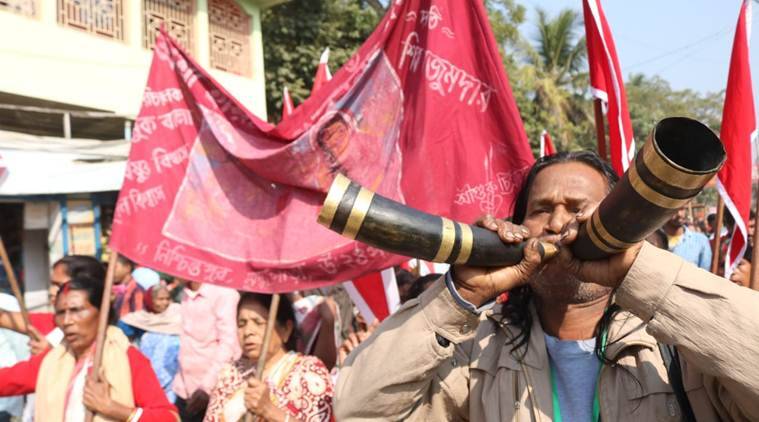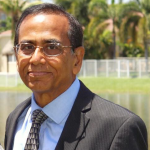
 The rise of the Matua in less than 15 years is like a fairy tale. It is possible only in a democracy and perhaps only in a country like India, where no caste, community or individual is really in charge forever, and where the only constant is the change.
The rise of the Matua in less than 15 years is like a fairy tale. It is possible only in a democracy and perhaps only in a country like India, where no caste, community or individual is really in charge forever, and where the only constant is the change.
By Nazarul Islam
My recent post regarding the fast shrinking space of the Bengali ‘bhadralok’ generated more than its share of excitement and interest. Narendra Modi’s recent visit to Orakandi, after the festivities in Bangladesh, literally opened up the tinder box. This article is an extension to the debates and discussions unleashed on the subject….
Every community of the world has a story of its own to tell, and such stories can be narrated best in a democracy. At present, the Matua community of Bengal is demonstrating a unique example of such narration. Perhaps assertion is a better word for it.
Many communities of India have earlier succeeded in inscribing an epigraph of such stories at the beginning of different chapters of our history. Recent examples are the assertion of the Dalits of Uttar Pradesh under the aegis of Kanshi Ram and Mayawati, the assertion of the Yadavs of Bihar and UP, and some other communities all over India.
Syed Imam, a learned opinion maker had rightly pointed out that the story of bhadralok would be incomplete without the missing details of the forgotten Matuas, (origins in eastern Bengal) who have different story to tell. Reel back to 2005, and you will not find any mention of this community anywhere in the media. The ‘bhadralok’ Bengalis, a sobriquet for the upper castes (Brahmin, Vaishya and Kayastha), did not even know the existence of such a sect in Bengal. The name started surfacing in 2009, got some prominence in 2011, and has succeeded in establishing it as a major socio-political factor in Bengal by now.
So much so that Prime Minister Narendra Modi went to Orakandi, the Matua shrine in Bangladesh during his recent trip to that country, and said, “Who would have thought that someday an India’s Prime Minister will come to Orakandi!” Yes, no one could.
Call it politics if you want. For the Matuas, however, this was their highest point of glory. An unknown Orakandi is now known to all.
The Matuas are a Dalit population and is quite a large one. They were organized as a sect named Matua by Harichand Thakur (1812-1871) who was a peasant like almost every one of his community and lived in Orakandi. His aim, it is claimed, was to empower the downtrodden.
For the record, Matuas were known as ‘Thakur’ community before emerging as a sect called Matua. Many of them lived in East Pakistan ever after the partition and were forced to take shelter in later decades, particularly during and after the Bangladesh war. Though there was no caste census in Bengal ever, it is believed that they comprise 20 to 30 per cent of Bengal’s population and is a factor in one-fourth of Bengal’s 294 assembly constituencies.
This community is largely a downtrodden community still now, though some of them have jobs, mostly in the government sector. But like the Muslim infiltrators from Bangladesh, a sizable part of them is not valid citizens of India according to Indian laws, though they have voter cards or Aadhar cards.
For decades, the Matua community had tried to formalize their identity as Indian citizens, but got no response from anywhere, simply because they failed to assert themselves. The communists, who ruled Bengal from 1977 to 2011, did not attach much importance to caste identity. Mamata Banerjee succeeded in organizing their en bloc vote in 2009, gave the descendants of Harichand Thakur important political positions, but failed to redress their concern about legal citizenship.
The BJP promised them citizenship through Citizenship Amendment Act (CAA), though it has not been implemented yet. But Mamata has opposed the CAA vehemently. When Narendra Modi visited Orakandi on the day of the first phase of polling in Bengal, Didi protested hoarsely, fearing the Matua vote shifting en bloc towards the BJP.
For the records again, the Matua is a Vaishnav sect that worships Krishna (who, like Ram, is an avatar of Narayan).
Despite everything, till now the Matua community did not have ‘recognition’ in society. They remained a subaltern caste and their guru Harichand Thakur was never mentioned in the mainstream narrative. But things have changed now. While in Orakandi, Modi dwelt on Harichand Thakur’s contribution time and again, and uttered his name along with other great religious figures of Bengal.
This was the highest point of glory for the Matuas. No doubt, Narendra Modi was playing a political game. But that does not change history. Modi’s visit to Orakandi, and his heaping praise on Harichand Thakur is now part of history.
And the Matuas have earned it. They have changed their political loyalty in search of their recognition as a sect. Earlier, most of them had voted for the Left. Then they shifted to the TMC. In 2019, they shifted towards the BJP. This community is using the political situation to the hilt for their advantage. This is a wonderful feat for a subaltern community.
The rise of the Matua in less than 15 years is like a fairy tale. It is possible only in a democracy and perhaps only in a country like India, where no caste, community or individual is really in charge forever, and where the only constant is the change.
______________________
About the Author
 The Bengal-born writer Nazarul Islam is a senior educationist based in USA. He writes for Sindh Courier and the newspapers of Bangladesh, India and America.
The Bengal-born writer Nazarul Islam is a senior educationist based in USA. He writes for Sindh Courier and the newspapers of Bangladesh, India and America.